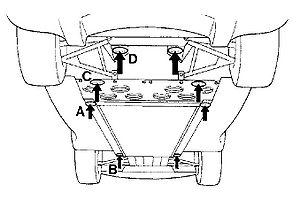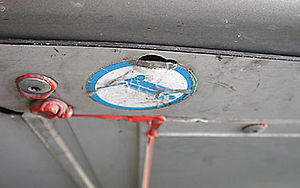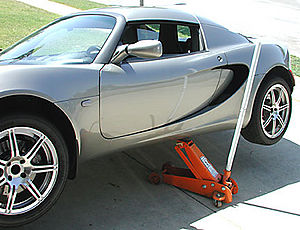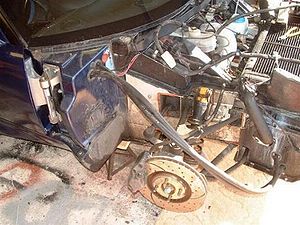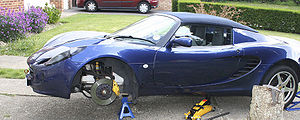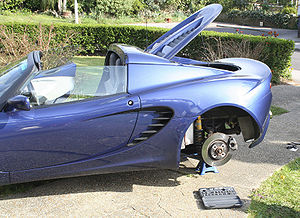Difference between revisions of "Jacking points"
m |
m |
||
| Line 42: | Line 42: | ||
* [[Jacking accidents]] | * [[Jacking accidents]] | ||
| + | |||
| + | [[Category:DIY]] | ||
| + | [[Category:Lotus Elise]] | ||
| + | [[Category:S1]] | ||
| + | [[Category:S2]] | ||
Revision as of 13:30, 17 April 2007
Take your time when jacking the car up, make sure you have the jack in the correct place.
When placing the car onto axle stands be slow lowering the jack as the car needs to shift its weight.
A
A
In the above image. Marks the single point per side jacking point, marked with a blue jacking point sticker on the underside of the car. This jacking point will allow you to raise both wheels on one side of the car at the same time.
B
In the above image. Marks a jacking point that should be used when the car is raised on a 4 point lift, in conjunction with the C point (below)
Both B points can be used together to support the front of the car when work requires both front wheels to be removed. This can be with conventional axle stands or more stably, two boxes (5 reams) of paper.
Axel stands on the b jacking points spread on wood you can see them under the wood
C
Marks a jacking point, in the fuel tank bay shear panel, which should be used in conjunction with point B (above) when raising the car on a 4 point lift. This jacking point cannot be used without removing the undertray.
D
Marks a jacking point that may be user to raise the rear of the car. This jacking point cannot be used without removing the undertray.
